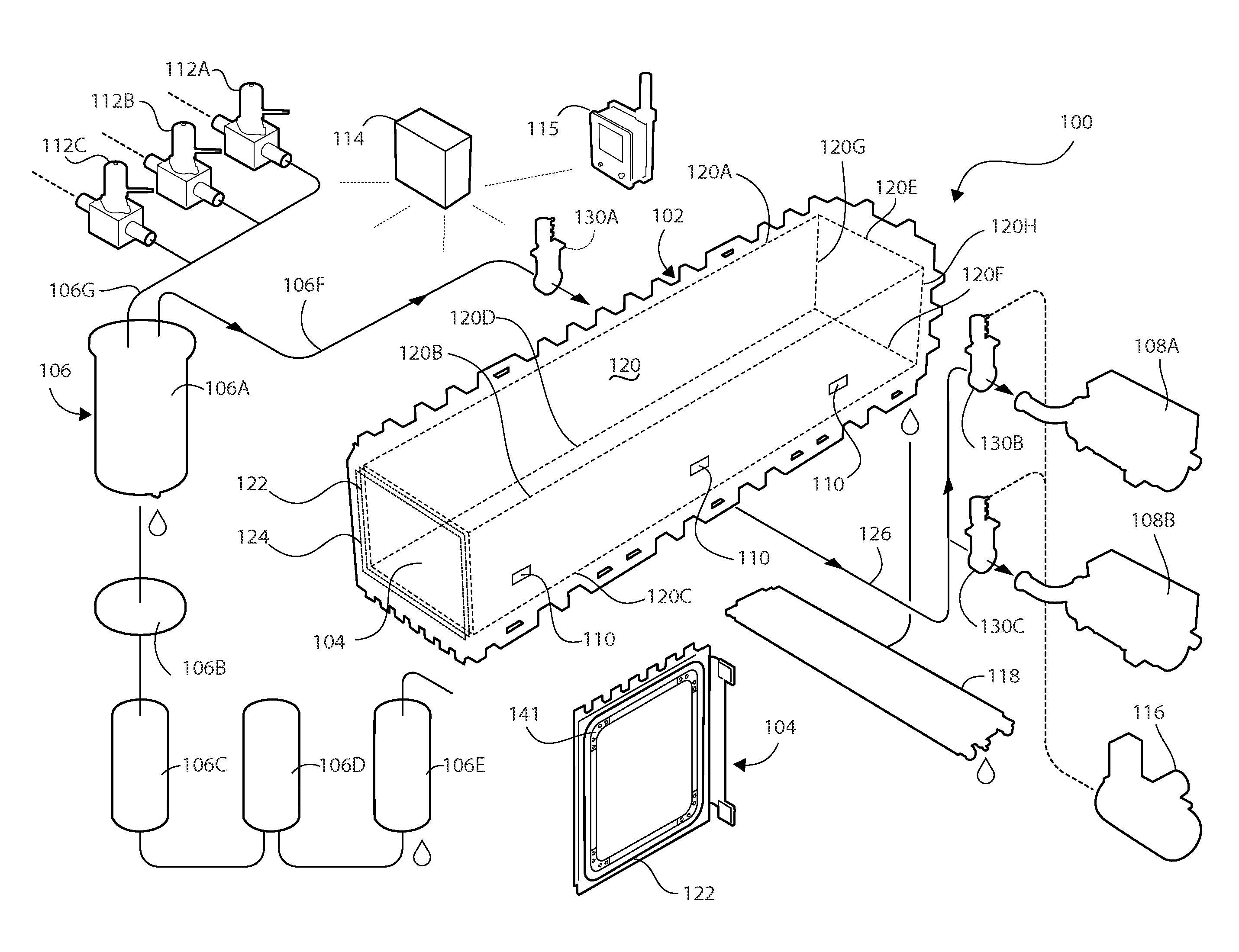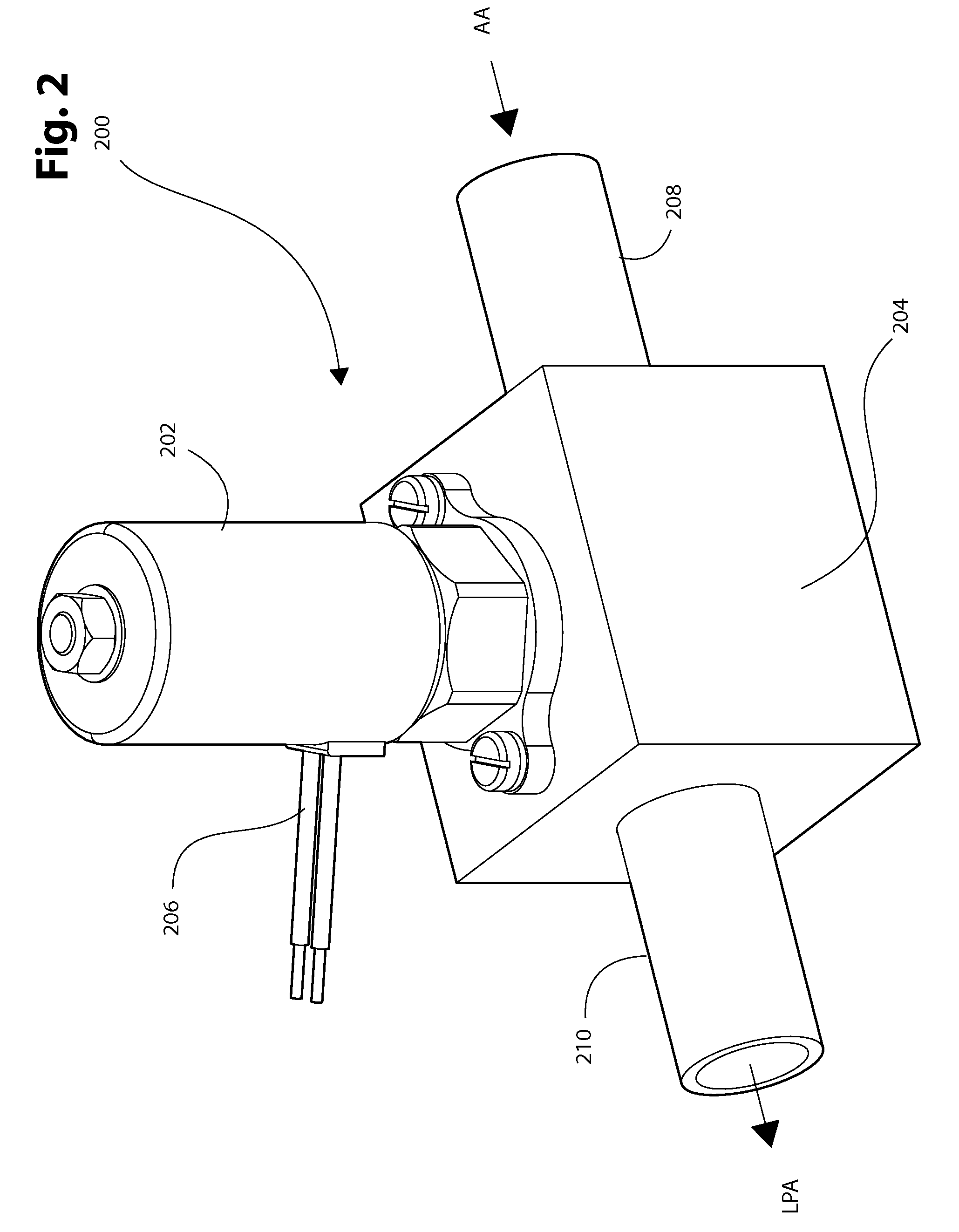Systems and methods for controlled pervaporation in horticultural cellular tissue
a technology of horticultural cellular tissue and controlled pervaporation, which is applied in the field of systems and methods for controlled pervaporation in horticultural cellular tissue, can solve the problems of inability to reduce the internal level of active ethylene of lp technology, severely criticized lp technology as having implicit deficiencies, and severely desiccated horticultural commodities, etc., to reduce the supply of biochemical energy in the tissue, prevent the tissue, and little usable biochemical energy
- Summary
- Abstract
- Description
- Claims
- Application Information
AI Technical Summary
Benefits of technology
Problems solved by technology
Method used
Image
Examples
embodiment 100
[0070]Referring to FIG. 1, in the warehouse embodiment 100, the chamber 102 is constructed from ⅜ inch thick continuous steel panels forming a rectangular-shaped enclosure 120 with well seams restricted to the edge margins 120A-120F. The welds 120A-120F should exhibit deep penetration with no visible evidence of porosity (bubbles) and no oxidation. As shown in FIG. 1, the chamber 102 comprises four large steel panels each 40 feet by 10 feet welded at the edge margins 120A, 120B, 120C and 120D, and a steel panel of approximately 10 feet by 10 feet closing a back wall with edge margins 120E, 120F, 120G, 120H.
[0071]b) Chamber Door
[0072]FIG. 1 shows a door 104 of the exemplary warehouse system 100 in a closed, sealed position. Referring to FIG. 1, in the warehouse embodiment, the door 104 comprises a generally square-shaped 1 inch thick continuous sheet of aluminum. The door 104 further comprises a single O-ring gasket 122 affixed to the door 104.
[0073]Alternately, the door 104 comprise...
embodiment 500
[0163]Referring to FIG. 5, for the intermodal container embodiment 500, the target humidity level alternately may be maintained without use of a humidity sensor, ancillary water, or a humidifier. The vacuum pump 508 and pressure regulator 512A / B may be controlled by adjusting the air entering the container 520 responsive to the level of water evaporating from the commodity due to heat produced by glycolysis and aerobic respiration. In this alternate method for humidification, responsive to the pressure differential between the atmospheric air pressure level, on the one hand, and the target pressure within the storage space, on the other hand, a pneumatic air horn uses 1.0 to 3.6 incoming chamber volumes of air per hour to recirculate 500 to 1800 cfm of chamber air previously saturated by water evaporated from commodity within the storage space responsive to latent heat produced by the commodity's aerobic respiration and fermentation.
[0164]Referring to FIG. 5, the aluminum dish head ...
PUM
 Login to View More
Login to View More Abstract
Description
Claims
Application Information
 Login to View More
Login to View More - R&D
- Intellectual Property
- Life Sciences
- Materials
- Tech Scout
- Unparalleled Data Quality
- Higher Quality Content
- 60% Fewer Hallucinations
Browse by: Latest US Patents, China's latest patents, Technical Efficacy Thesaurus, Application Domain, Technology Topic, Popular Technical Reports.
© 2025 PatSnap. All rights reserved.Legal|Privacy policy|Modern Slavery Act Transparency Statement|Sitemap|About US| Contact US: help@patsnap.com



